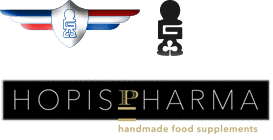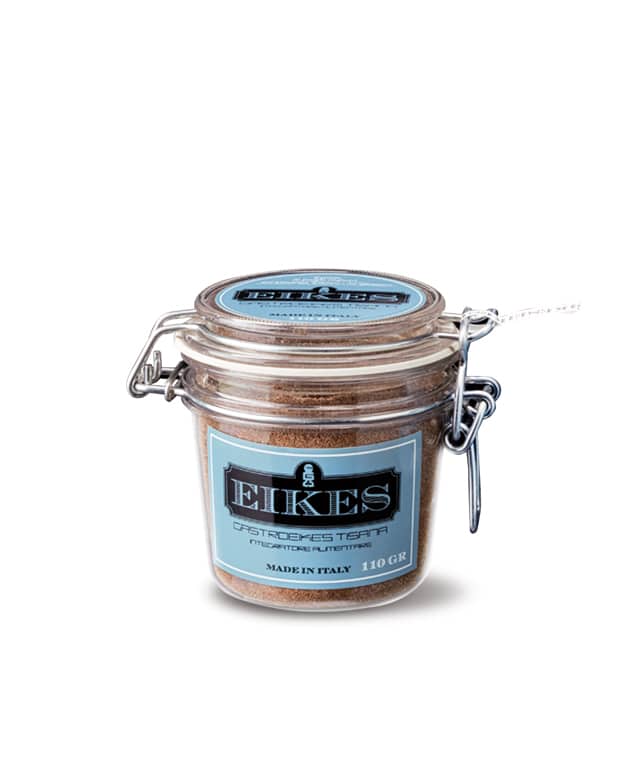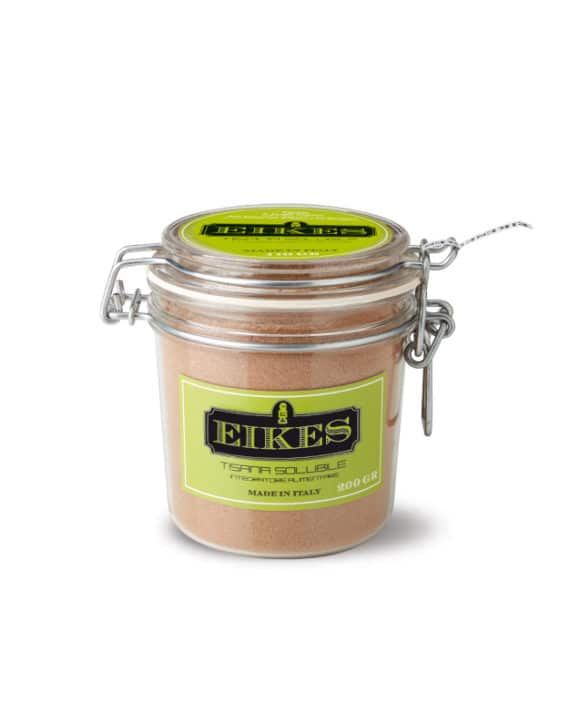Descrizione
CARATTERISTICHE DEL PRODOTTO
Il fungo che caratterizza questa produzione è Hericium detto anche Lion’s Mane, Old Man’s Beard. Per la prima volta associamo con favore un fungo con un’alga, il Condrus Crispus, utilizzati da sempre per la funzione digestiva. La liquerizia deglicirizzinata mostra preziose proprietà grazie ai suoi flavonoidi, in particolare l’assenza di acido glicirizzinico riduce gli effetti indesiderati sulla pressione. Essa ha inoltre una funzione positiva del sistema digestivo e della funzionalità articolare.
L’alga Condrus crispus favorisce la funzione digestiva, la regolarità intestinale mantenendo in equilibrio il peso corporeo. La lavorazione di manifattura farmaceutica delle tisane solubili, con la miscelazione finale al mortaio è particolarmente accurata. Questa attenzione è rivolta ad esaudire le esigenze di cura nell’allestire i preparati ma sopra tutto è un omaggio a tutti i nostri clienti, gratificandoli per la loro scelta anche con formulazioni allestite in lotti limitati e così numerati a mano.
I riferimenti e le indicazioni alla MTC non vogliono in nessun modo essere sostituti della medicina occidentale, del consiglio medico e di una dieta variata.
INGREDIENTI:
- HERICIUM ERINACEUM E.S. TIT 40% polisaccaridi*
- GLYCYRRHIZA GLABRA(DEGLICERIZZINATA) E.S.*
- PISTACIA LENTISCUS E.S.
- CHONDRUS CRISPUS THALLUS
- MSM
- FINOCCHIO O.E.
- STEVIA REBAUDIANA
- FECOLA DI PATATE
COME UTILIZZARE IL PRODOTTO
1 cucchiaio da tea in 250ml di acqua tiepida 2 volte al giorno.
DOSI GIORNALIERE
Hericium 1200mg
Liquirizia (deglicerizzinata) 1200 mg
Pistacia lentiscus 600mg
MSM 600mg
Chondrus Crispus carragenina 600mg
FORMATO
110 grammi
Vaso PET tappo ermetico sigillo apposto a mano
* materia prima origine CINA
BIBLIOGRAFIA
– Wu Y, Jiang H, Zhu E, Li J, Wang Q, Zhou W, Qin T, Wu X, Wu B, Huang Y. Hericium erinaceus polysaccharide facilitates restoration of injured intestinal mucosal immunity in Muscovy duck reovirus-infected Muscovy ducklings. Int J Biol Macromol. 2017 Sep 23. pii: S0141-8130(17)32140-2. doi: 10.1016/j.ijbiomac.2017.09.092
– Thongbai, B.; Rapior, S.; Hyde, K.D.; Wittstein, K.; Stadler, M. Hericium erinaceus, an amazing medicinal mushroom. Mycol. Prog. 2015, 14, 91–113.
– Ma, B.J.; Shen, J.W.; Yu, H.Y.; Ruan, Y.; Wu, T.T.; Zhao, X. Hericenones and erinacines: Stimulators of nerve growth factor (NGF) biosynthesis in Hericium erinaceus. Mycology 2010, 1, 92–98
– Zhang, J.; An, S.; Hu, W.; Teng, M.; Wang, X.; Qu, Y.; Liu, Y.; Yuan, Y.; Wang, D. The Neuroprotective Properties of Hericium erinaceus in Glutamate-Damaged Differentiated PC12 Cells and an Alzheimer’s Disease Mouse Model. Int. J. Mol. Sci. 2016, 17, 1810.
-Y. Tsukimi, C. Nozue, and S. Okabe, “Effects of leminoprazole, omeprazole and sucralfate on indomethacin-induced delayed healing of kissing gastric ulcers in rats,” Journal of Gastroenterology and Hepatology, vol. 11, no. 4, pp. 335–340, 1996.
–Federico Brandalise, Valentina Cesaroni, Andrej Gregori, et al., “Dietary Supplementation of Hericium erinaceus Increases Mossy Fiber-CA3 Hippocampal Neurotransmission and Recognition Memory in Wild-Type Mice,” Evidence-Based Complementary and Alternative Medicine, vol. 2017, Article ID 3864340, 13 pages, 2017. doi:10.1155/2017/3864340.
-K. Mori, S. Inatomi, K. Ouchi, Y. Azumi, and T. Tuchida, “Improving effects of the mushroom Yamabushitake (Hericium erinaceus) on mild cognitive impairment: a double-blind placebo-controlled clinical trial,” Phytotherapy Research, vol. 23, no. 3, pp. 367–372, 2009.
-J. M. Conner, K. M. Franks, A. K. Titterness et al., “NGF is essential for hippocampal plasticity and learning,” The Journal of Neuroscience, vol. 29, no. 35, pp. 10883–10889, 2009.
-K. Mori, Y. Obara, M. Hirota et al., “Nerve growth factor-inducing activity of Hericium erinaceus in 1321N1 human astrocytoma cells,” Biological and Pharmaceutical Bulletin, vol. 31, no. 9, pp. 1727–1732, 2008.
-G. Kempermann, “Adult neurogenesis: an evolutionary perspective,” Cold Spring Harbor Perspectives in Biology, vol. 8, no. 2, Article ID a018986, pp. 1–9, 2016.
-Jing-Yang Wong, Mahmood Ameen Abdulla, Jegadeesh Raman, et al., “Gastroprotective Effects of Lion’s Mane Mushroom Hericium erinaceus (Bull.:Fr.) Pers. (Aphyllophoromycetideae) Extract against Ethanol-Induced Ulcer in Rats,” Evidence-Based Complementary and Alternative Medicine, vol. 2013, Article ID 492976, 9 pages, 2013. doi:10.1155/2013/492976
-J. L. Wallace, “Recent advances in gastric ulcer therapeutics,” Current Opinion in Pharmacology, vol. 5, no. 6, pp. 573–577, 2005.
-J. Yamahara, M. Mochizuki, H. Q. Rong, H. Matsuda, and H. Fujimura, “The anti-ulcer effect in rats of ginger constituents,” Journal of Ethnopharmacology, vol. 23, no. 2-3, pp. 299–304, 1988.
-K.-H. Wong, M. Naidu, P. David et al., “Peripheral nerve regeneration following crush injury to rat peroneal nerve by aqueous extract of medicinal mushroom Hericium erinaceus (Bull.: Fr) Pers. (Aphyllophoromycetideae),” Evidence-Based Complementary and Alternative Medicine, vol. 2011, Article ID 580752, 2011.
–Liu J, Kandasamy S, Zhang J, Kirby CW, Karakach T, Hafting J, Critchley AT, Evans F, Prithiviraj B. Prebiotic effects of diet supplemented with the cultivated red seaweed Chondrus crispus or with fructo-oligo-saccharide on host immunity, colonic microbiota and gut microbial metabolites. BMC Complement Altern Med. 2015 Aug 14;15:279. doi: 10.1186/s12906-015-0802-5.
–Wu F, Zhou C, Zhou D, Ou S, Zhang X, Huang H. Structure characterization of a novel polysaccharide from Hericium erinaceus fruiting bodies and its immunomodulatory activities. Food Funct. 2017 Nov 23. doi: 10.1039/c7fo01389b.






